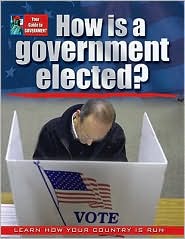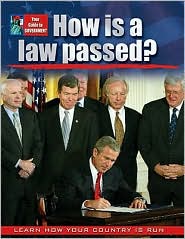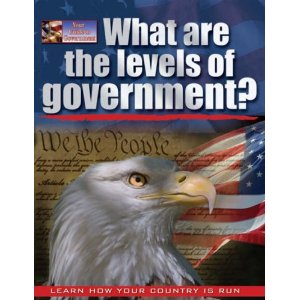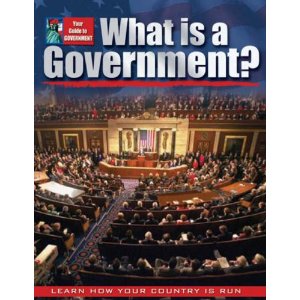| ________________
CM . . .
. Volume XVII Number 3. . . .September 17, 2010
excerpt:
This series, “Your Guide to Government,” provides a simplified overview of United States government, including the roles of different levels of government, the importance of citizen involvement in the election process and how laws are passed. If you feel that you need more information on the American government in your primary/junior library collection, you may want to consider this series. It divides the information into manageable topics and uses simple language and many large and colourful photographs and illustrations to explain each topic. Each book includes a contents, simple glossary and index. We need to follow all of these laws. For example, your local government decides what school supplies you need. Your state decides the subjects that schools should teach. The national government makes laws to ensure that every child can go to school. (From How is a Law Passed?.) The text also assumes a certain set of values and experiences which may not reflect all of the students in our schools. In How is a Government Elected? the reader is asked to “Think about a family planning a vacation. Everyone shares their ideas. Each family member votes on where to go.” It is likely that not every student shares that experience. How is a Government Elected? explains what elections are and the important role and responsibility of the right to vote. How is a Law Passed? follows the long path that all legislation takes from the initial identification of the need for a law, its introduction, through committee, Congress, and the House of Representative, to the President for approval. What are the Levels of Government? uses simple explanations to distinguish the levels of government in the United States and to explain how each level contributes to the lives of individual citizens. The levels of government described include school, city, district, county, state, and federal. The special role of tribal councils on Native American reservations is also discussed. What is a Government? explains the three branches of United States government, the legislative branch, the executive branch, and the judicial branch. The explanations are clear but may confuse young readers because of the assumption that the reader is a citizen of the United States. “The President of the United States leads our country. The governor leads your state.” Although this series might be sufficiently useful in a school in the United States, the weaknesses and the lack of relevance of the topic to young Canadian students mean that I can not recommend it. Not Recommended. Suzanne Pierson is a retired teacher-librarian, currently instructing Librarianship courses at Queen’s University in Kingston, ON.
To comment
on this title or this review, send mail to cm@umanitoba.ca.
Copyright © the Manitoba Library Association. Reproduction for personal
use is permitted only if this copyright notice is maintained. Any
other reproduction is prohibited without permission.
NEXT REVIEW |
TABLE OF CONTENTS FOR THIS ISSUE
- September 17, 2010.
AUTHORS |
TITLES |
MEDIA REVIEWS |
PROFILES |
BACK ISSUES |
SEARCH |
CMARCHIVE |
HOME |



